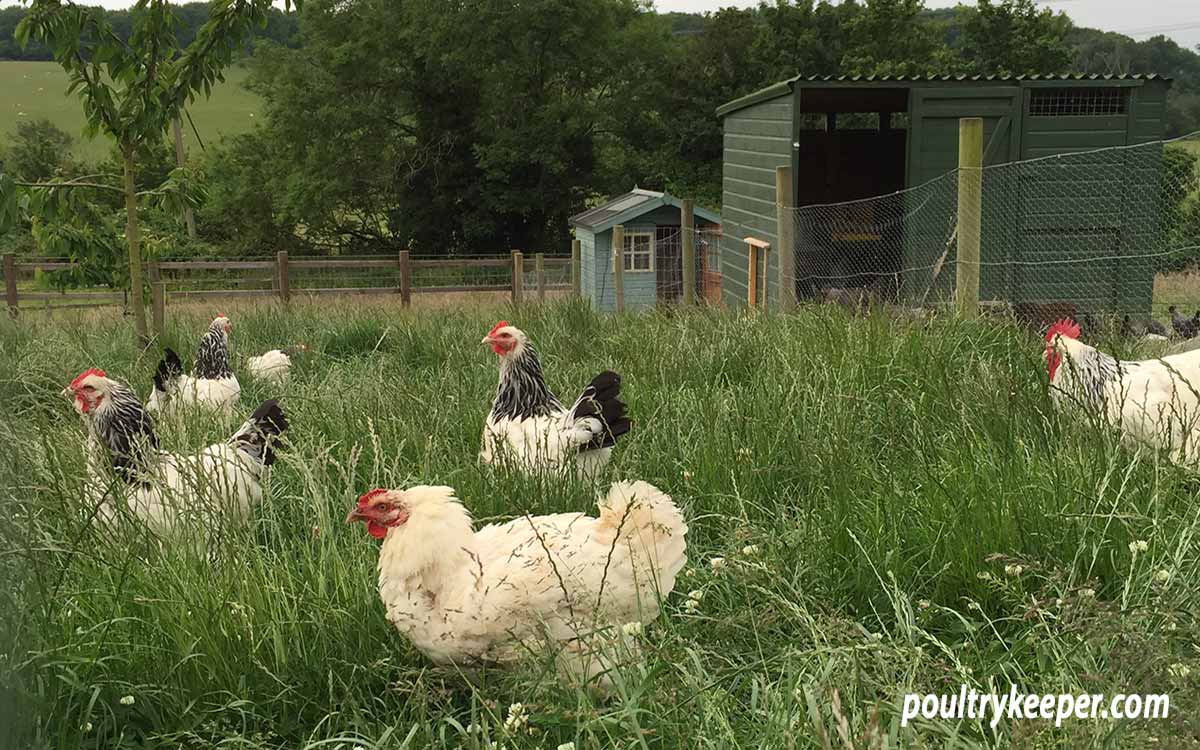
There are times when we need to introduce new chickens to our flock. Maybe you’ve purchased some new birds or have raised some chicks that have reached point-of-lay and are ready to join your layers. Whatever the reason, you will want it to go as smoothly as possible, without too many feathers flying! In this article, I offer some tips for introducing new chickens to an established flock.
Quarantine to prevent disease
Before introducing new chickens to the flock, it is advisable to quarantine your newcomers to ensure they don’t have any underlying diseases that can spread around your flock. A large puppy crate or a broody hen coop with a run or a small chicken house that can be moved around is useful to use as a quarantine area.
Ideally, this should be for two weeks, although I tend to reduce this time if the birds look healthy and have come from a reputable breeder or increase it if I have any doubts. Take extra care with birds purchased at markets and poultry auctions that have been close to other birds.
Before you place them in quarantine, check them over for:
- Signs of lice or lice eggs around the bottom.
- Scaly leg mites. These cause rough-looking scales on the feet and legs.
Then, whilst they are in quarantine, look for:
If you have any concerns about introducing new chickens because of their health, I would suggest getting a worm egg count done to see whether they need to be wormed. That can often sort out a myriad of health problems.
The pecking order
In every flock of chickens, there is a pecking order. It is a natural behaviour, developed over thousands of years of evolution and creates a functioning society that helps survival. Hens have learned to avoid predation by not fighting over their food which would otherwise draw attention.
Every bird in the flock knows where it stands in the pecking order and is continually being challenged or is challenging another bird to maintain or improve its social position.
I like to imagine the pecking order of a flock as a ladder. The chicken on top doesn’t get pecked, but there are more and more chickens above you to peck you as you move down.
What happens when we add new chickens?
In the wild, chickens live in small groups of a few females and one male, so it isn’t normal for them to live in large groups. There is also enough space for chickens at the bottom of the pecking order to stay clear of chickens higher-ranking birds. When we enclose chickens in a run, we are forcing them together, to live in closer proximity. Also, we are placing their source of food in one or two locations, which is likely to increase the likelihood of challenges and pecking.
Introducing new chickens upsets the pecking order in your flock, and it’s even more challenging in small chicken runs for the reasons above. None of the hens will know where they stand with one another, and the pecking order must be re-established. This takes time and will cause stress for your birds, so we should try to keep the number of new introductions to a minimum.
There are, however, several things we can when we introduce new chickens to make it easier for them.
Introducing new chickens
Sometimes hens can be vicious and real bullies! Introducing new chickens can be tough on us, the owners, to see such ‘cruelty’ happening in the run. It’s not uncommon for them to draw blood, but often it is essential for the first week or two until the pecking order is re-established.
Here are some tips to follow to try to make it as easy as possible:
Necessities
Only introduce hens when it’s essential. After all, they are happier living in small groups, so if, for example, you want to keep an additional breed, why not keep them in a separate house and run, rather than in a large run together?
Only introduce birds that are of a similar size
When introducing new chickens, ensure that pullets are fully mature (around 18 weeks old for hybrids but up to 23 weeks for large breeds like Orpingtons). Youngsters will get bullied and won’t be able to stand up for themselves. Be careful with the size of different breeds you mix, and make sure birds are fully feathered.
Separate area
The easiest way to introduce hens is to put newcomers in a separate, fenced-off area within the chicken run so that they can get used to one another, but with the safety of a fence between them.
I have used an old roll of wire to build a temporary fence, and in larger runs, I have used a chicken fencing kit like this one from Omlet.
It doesn’t need to be too elaborate, just as long as they cannot mix.
After a week, you can introduce the new birds, and you will see far fewer problems.
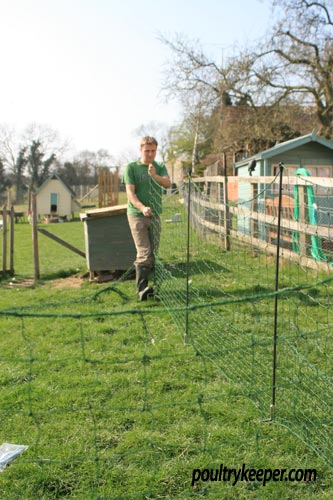
Space
Try to provide as much space as possible while they are getting accustomed to one another. It might mean opening the door of your chicken run to allow hens to free-range in your garden while the introductions are taking place.
Space will enable hens to keep their distance if they are getting bullied.
Feeding and drinking
Ensure there are at least two feeders so that hens lower down the pecking order can still get to eat. The same applies to water containers; ensure there is more than one available.
Introduce at night
A little known fact is that chickens have a good sense of smell, so when introducing new chickens, it can help to have them in the coop together overnight, getting used to the smell of one another.
Ensure they have had food and water, then introduce the new hens when it’s dark.
Make sure you are there at first light in the morning to let them out and keep an eye on things.
Check that they can access food and water during the day. If they end up hiding in the hen house, put food and water in there, so they have an opportunity to eat and drink.
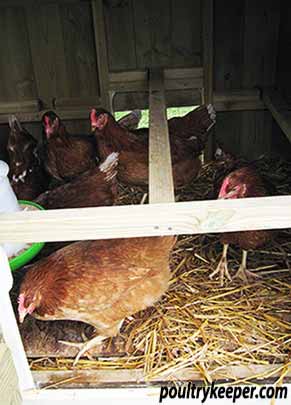
New territory
Chickens are territorial, so another way to make an introduction is to put them with your flock in a house and run that is new to both of them.
Neither group has an established territory, so this can sometimes work well.
Add a distraction
Hang old CDs and some spring greens from different places in the run. It can sometimes work well as a distraction. Scatter corn in the run at regular intervals to take the attention off new birds and give them a chance to eat.
The same colour birds?
Keep in mind when purchasing replacements that breeders often rear birds in pens of the same size and colour.
Bullying and aggression can occur when chickens meet birds of a different colour, and it may take them a long time to get used to them than birds of the same colour.
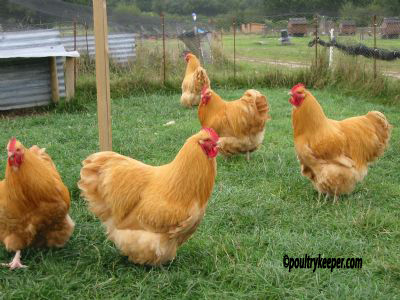
If there are problems
Introducing new chickens to the flock is often straightforward, especially if some thought has been put into it beforehand. Sometimes it just doesn’t go well, so be prepared to make some changes and intervene, if necessary.
Separate the bully
If there is one particular bird that is bullying the others, then remove her for a while. Once your new birds have had a chance to integrate into the flock, it will be easier for them to cope with the one bully.
When re-introduced, she will be spending her time figuring out where she fits into the whole flock and will be less likely to bully your new birds.
Drawing blood
Be prepared for some pecking, chasing and squabbles. Try not to intervene unless there is blood drawn. If there are more than a few spots of blood, you should isolate the injured bird immediately. Chickens are attracted to the colour red, and a bird that is bleeding is a target for the whole flock.
If a small amount of blood is present on the comb, I usually keep a close eye but try to make sure it doesn’t escalate. If more than a few spots appear, I remove the bird but try to keep it close to the flock so they can continue to see the bird.
There is a purple veterinary spray available for treating minor wounds.
If a chicken has an open wound, it will soon get pecked to death by the other hens, isolating it within a safe enclosure inside the run.
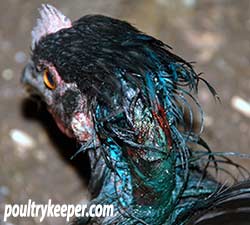
Expect a certain amount of bullying when introducing new chickens. It’s hard to watch but often, after a week, sometimes a little longer, things suddenly click into place, and the pecking order is re-established.
Less is more
Introducing new chickens isn’t always the best idea. Remember that if you avoid overcrowding and give a small number of chickens enough space in their coop and a large run, they will be far happier and less stressed, leading to a higher quality, healthier life.
You can learn more about the pecking order here, which also contains a short video demonstrating it in action.




